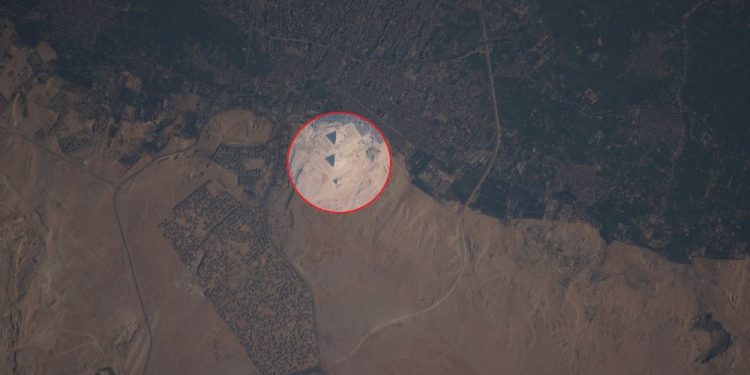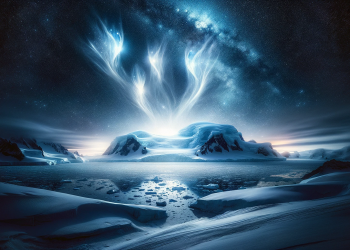Let’s face it, for archaeology and history lovers, seeing ancient monuments such as the Sphinx or the pyramids is a unique and wonderful experience. Examining these ancient structures up close feels like one could travel back in time and witness the precise moments these ancient monuments were built. Regrettably, we can’t travel back in time, so it’s impossible to know what these monuments looked like thousands of years ago. We can witness remnants of their former glory by visiting various sites.
Within the ancient stones used in their construction are stories, myths, and legends embedded in their very core. The monuments speak. Not literally, of course, but they do. They tell of a time when powerful ancient civilizations called our planet home. They were advanced in every sense, capable of the greatest achievements of mankind, and I’m not invoking aliens.
Evidence in stone
Let’s face it, ancient civilizations such as the ancient Sumerians, Egyptians, Chinese, Mayas, and Aztecs were all civilizations that were incredible astronomers, engineers, and architects.
The stones speak, and each stone has a story to tell. Every single piece of rock that was quarried in ancient times in Egypt has a personal story to tell about the people that helped quarry it, transport it, and eventually place it into position, like a small part of a gigantic puzzle, to form some of the most impressive ancient monuments the world has ever seen.
These ancient stones are an encyclopedia of the ancient world. They are a long-forgotten poem from when powerful kings ruled over the golden sands and fertile Nile River. These stones—some of which weigh more than 20 tons—can be seen as a time capsule leading us into ancient Egyptian monuments’ very heart.
Yes, seeing the Sphinx up close is a chilling sensation. Standing in front of the massive pyramids at Giza is unforgettable. Nonetheless, a person can’t nearly appreciate all these ancient monuments have to offer by standing in front of them. It is because they are truly gigantic in nature.
The mighty Sphinx
Take for a starting point the Great Sphinx at Giza.
The gigantic statue depicting a lion’s body and a man’s head is unique from all the other statues on the planet’s surface. A Monolith carved out of the bedrock of the Giza plateau, the Sphinx measures 73 m (240 ft) long from paw to tail and 20 m (66 ft) high.
Shrouded in mystery, the statue, which was once believed to be an ancient god, has stood watch over the sands of Egypt for so long that history itself can’t remember it.
Engulfed in silence, the Sphinx was buried beneath the surface for most of antiquity. Times went by. Pharaohs came and went. Monuments were built. Egypt changed, and so did the landscape and the stars above it. Just how long the Sphinx has remained within the u-shaped trench it sits today remains a mystery no one can solve with certainty. A statue out of time and place, the Sphinx has been regarded by many experts as a monument that even predates the ancient Egyptian civilization.
Its function, just as its origins, remains a complete mystery. Even though the ancient Egyptians were excellent record keepers, not one ancient text, symbol or clue has been found that tells us when, why, and how the Sphinx was carved. There is nothing, absolutely nothing, zero, nada that mentions the Sphinx and its exact date of construction. Gaston Maspero, the French Egyptologist and second director of the Egyptian Museum in Cairo, believed the Sphinx to be “the most ancient monument in Egypt”.
He may not have been wrong despite mainstream scholars saying the Sphinx is no older than the fourth dynasty reign of Khafre. Egyptologist E. A. Wallis Budge agreed that the Sphinx predated Khafre’s reign, writing in The Gods of the Egyptians (1914): “This marvelous object [the Great Sphinx] was in existence in the days of Khafre, or Khephren and it is probable that it is a very great deal older than his reign and that it dates from the end of the archaic period [2686 BC].”
The little information we do know about the Sphinx is mostly modern archeological guesswork.
We know that the Giza Necropolis was abandoned at some unknown time in history, and the Sphinx and other monuments were eventually buried in the sand. The first supposed excavation of the Sphinx is believed to have taken place around 3,400 years ago when Pharaoh Thutmose IV managed to excavate the statue partially. Ramesses II the Great is thought to have restored the Sphinx around 1,213 BC. However, as the Sphinx is engulfed in mystery, so are the massive pyramids at Giza.
Egypt’s golden pyramids
Three large pyramids stand at Giza, accompanied by smaller (satellite pyramids) and other ancient structures. These, according to mainstream experts, date back to the Fourth Dynasty reigns of (primarily) Khufu, Khafre, and Menkaure. The first pyramid at Giza is thought to have been the Great Pyramid. Mainstream scholars argue that it was built no more than 4,500 years ago when a young Pharaoh Khufu succeeded his father, King Sneferu, to the throne.
The pyramid is said to have been built in no more than 20 years, during which the builders made use of approximately 2.3 million blocks of stone, some of which weigh more than 30 tons, in order to form a massive structure with a total volume of 2,583,283 cubic meters (91,227,778 cu ft), weighing approximately 6.5 million tons.
The massive pyramid, which once stood 146.7 meters (481 ft) in height, remained the tallest manmade structure on the planet’s surface for more than 3,800 years. Its summit is now missing, and the pyramid stands 138.8 meters (455 ft) in height. Two other pyramids were built in Giza. According to mainstream Egyptologists, the second pyramid erected at the Giza plateau was the pyramid of Khafre.
Although this pyramid seems larger than the pyramid of Khufu, Khafre’s pyramid has a smaller total volume of 2,211,096 cubic meters (78,084,118 cu ft). It appears larger because it sits on bedrock 10 meters higher than the pyramid of Khufu.
Khafre’s pyramid is considered Egypt’s last truly gigantic pyramid. Menkaure succeeded Khafre to the throne and also built a pyramid at Giza. His pyramid, however, is much smaller and signalizes a lesser form of pyramid building. Menkaure’s pyramid is smaller in volume than Egypt’s first pyramid—the Step Pyramid of Djoser.
It now stands 61 m (204 ft) tall with a base of 108.5 m. Experts agree that the exact age of the construction of Menkaure’s pyramid remains unknown. Menkaure’s reign has not been accurately defined, despite experts indicating it was completed no later than the 26th century BC. Although Egyptologists claim that the pyramids of Khufu, Khafre, and Menkaure served as kings’ tombs, the Pharaohs’ mummies have never been found.
Have something to add? Visit Curiosmos on Facebook. Join the discussion in our mobile Telegram group. Also, follow us on Google News.











